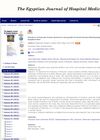Prepregnancy Phenotype and Physiological Characteristics in Polycystic Ovary Syndrome
January 2020
TLDR Women with PCOS have different body composition and some metabolic differences compared to healthy women.
In a study involving 118 young women, of which 15 self-reported a diagnosis of Polycystic Ovary Syndrome (PCOS), researchers investigated subclinical metabolic and cardiovascular features. The study assessed body composition using DEXA scans, fitness through VO2 max testing, and various physiological responses including blood pressure, pulse wave speed, and hemodynamics of different organs. Blood counts, metabolic and lipid profiles were also evaluated, and HOMA-IR was calculated as an index of insulin resistance. The results indicated that women with PCOS had higher Body Mass Index (BMI), total fat, and fat distribution, as well as differences in renal and hepatic volumetrics and certain laboratory markers compared to healthy subjects. However, there were no significant differences in adrenergic response, plasma volume, blood pressure, vascular compliance, uterine blood flow, pulse wave speed, and lipid profile between the two groups. Angiotensin II, urinary sodium, and creatinine levels were statistically different. Fasting glucose, insulin, and HOMA-IR were higher in the PCOS group, though not all were statistically significant. Despite the small sample size, the study suggests that the physiology of women with PCOS differs from healthy women, which may explain the clinical trajectories and future health risks associated with PCOS.
